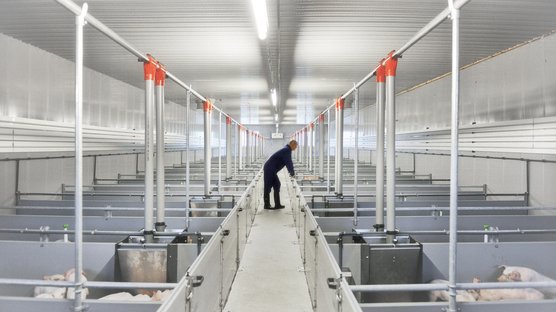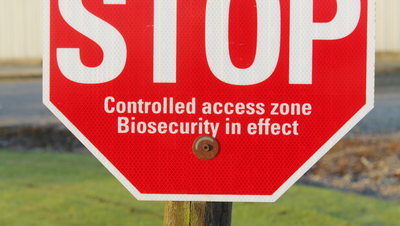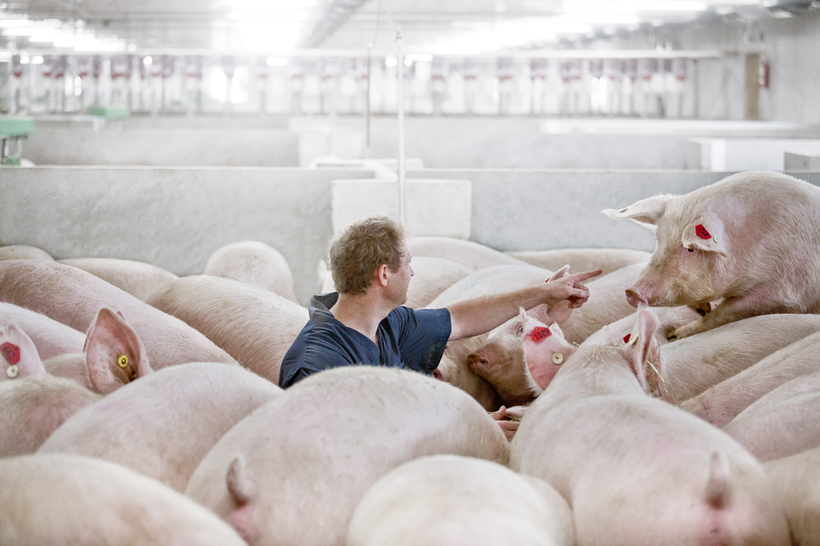
Published on June 28, 2024
Animal Welfare: A Non-Negotiable in Sustainable Breeding & Genetics
Animal welfare is defined as ‘the physical and mental state of an animal in relation to the conditions in which it lives and dies’1. Animal welfare is a multifaceted topic that involves several varying subjects such as ethics, science, culture, religion, and society. Due to how many different lenses that animal welfare can be viewed through, it can be an incredibly difficult topic to not only define but find “perfect” solutions to. However, animal welfare is also a key component to sustainability and something the entire animal industry must continue to adjust and adapt for future generations.
Animal Welfare
The five freedoms, which were printed in the Brambell Report in 1965, were the first internationally accepted standards of care for animals. The impact and use of the five freedoms is widespread across the world and was the foundation upon which animal welfare auditing tools were built. They are also the basis of how animal care protocols are developed by groups such as AVMA (American Veterinary Medical Association) and WOAH (World Organization for Animal Health).
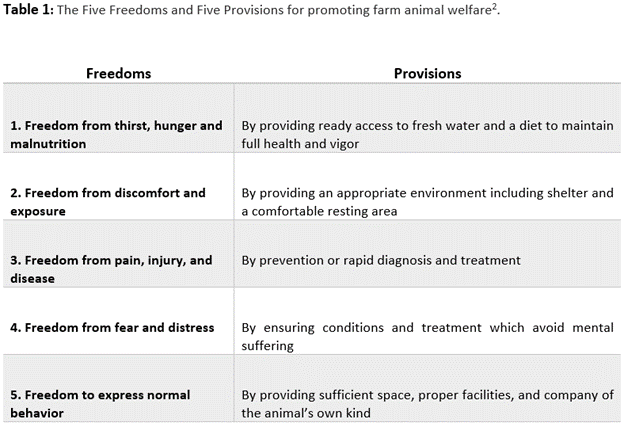
The animal welfare movement started with ethical concerns when mass animal production became more of the norm. But as time went on, the benefits of improved welfare standards in the industry have led to many other improvements, some being environmental sustainability and even human wellbeing standards in the workplace. ‘Treating animals with respect fosters empathy and compassion in individuals and communities, contributing to positive mental health and social well-being. Indeed, a better environment for animals is often a better environment for farmers, abattoir workers and everyone else involved in animal production’3. When people are treated better in the workplace, it directly correlates to improved welfare and care of the animals. It's easier to take care of others when you are also being taken care of.
As environmental concerns increase, we also have learned how improved welfare can positively correlate with improved environmental sustainability. ‘When animals are treated well, they are more productive and less prone to disease. They also require less feed and land for a given level of productivity, and they generate fewer pollutants that could enter bodies of water and impact aquatic ecosystems. Thus, animal welfare supports responses to environmental challenges. This is particularly important as society increasingly contends with the current and future effects of climate change’4. The ability to raise animals in an environment that is better for them, while also lowering the negative impact of farming on the environment, is truly a win-win solution.
Environmental enrichment
Enriching an animal’s environment is a necessity, but a complicated one. When looking for good enrichment items they need to be things that can be sterilized, or things that can be easily disposed of and replaced. Because of this, enrichment comes in a lot of different forms and varieties depending on the animal. With swine, the most popular form of enrichment is hanging chains that one or more pigs can nose and chew on. It can easily be added to the side of penning and sanitized to ensure good biosecurity. Other popular enrichment forms include bowling balls for nosing, burlap sacks or straw for nesting in farrowing rooms, durable rubber toys for chewing and nosing, and salt blocks or molasses blocks that can be slowly consumed and played with. Enrichment helps to keep the animals more entertained and helps to prevent negative stereotypic behavior from developing. Stereotypic behavior in pigs can be shown in a variety of ways, but most commonly presents itself in biting behavior, like ear or tail biting. Stereotypic behaviors lead to increases of distress for the animal that is being victimized and increasing aggressive behavior from the attacking animals.
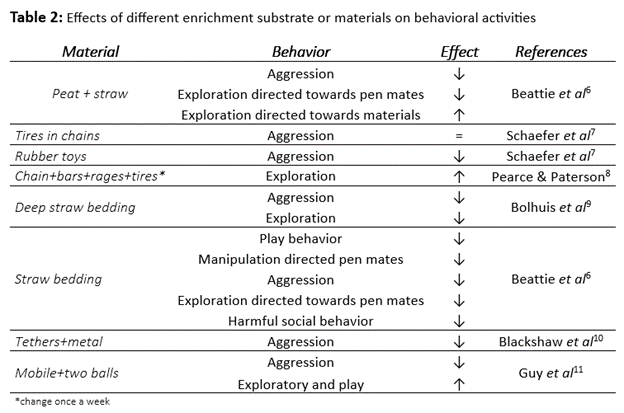
The timing of when enrichment is placed is also an incredibly important detail. A lot of producers will want to implement enrichment items into areas that are already showing negative behaviors. However, enrichment items are far more efficient when placed prior to negative behaviors. Once negative behaviors have become routine for the animals, it is a lot harder for them to break those behaviors. Enrichment will still absolutely help lessen the negative behaviors, but we suggest using it as prevention to those behaviors’ vs the solution to them. The key to happy animals is being proactive and making sure we are meeting all their needs as they arise. You will continue to fight an uphill battle if you only react to issues once they have become too big to ignore.
What about Hendrix Genetics?
Our vision is to set the standard for sustainable animal breeding. The welfare of animals has always been an important part of raising them. But as we continue to learn and understand animal behavior and understand their needs on a deeper level, we can continue to improve their quality of life. One added benefit of these changes has been the positive impact it has had on the animal handlers. “By going through 10 years of industry data, it was discovered that improved animal welfare makes the animals safer and easier to handle, which results in a need for fewer staff, who are more satisfied, likely to have substantially less time off and have fewer medical expenses [12,13]”14.
Hendrix Genetics has had a focus on sustainability and good welfare practices paired with responsible and thoughtful genetic progress since its inception in 1923. Having a sustainable and responsible mindset while embarking on continued genetic progress has led to Hendrix Genetics' position as one of the world leaders in animal breeding and genetics. Our breeding programs continue to make advancements in multiple species and strive for the betterment of all animals through sustainable breeding practices. Hypor has truly taken those two core beliefs and put it into multiple lines of sustainable breeding stock. Hypor’s sow line for example, the Hypor Libra, is a sow that is well-suited for group housing (which is more attuned to their wild hog counterparts' behavior), has excellent mothering and milking abilities, and producers incredibly uniform piglets that have a much better chance of survival. The Hypor mindset is not to push the sow to unrealistic standards of having more piglets than she can feed or having the ability to breed her as soon as possible, but instead it is to tap into her full genetic potential while still considering health and sustainability.
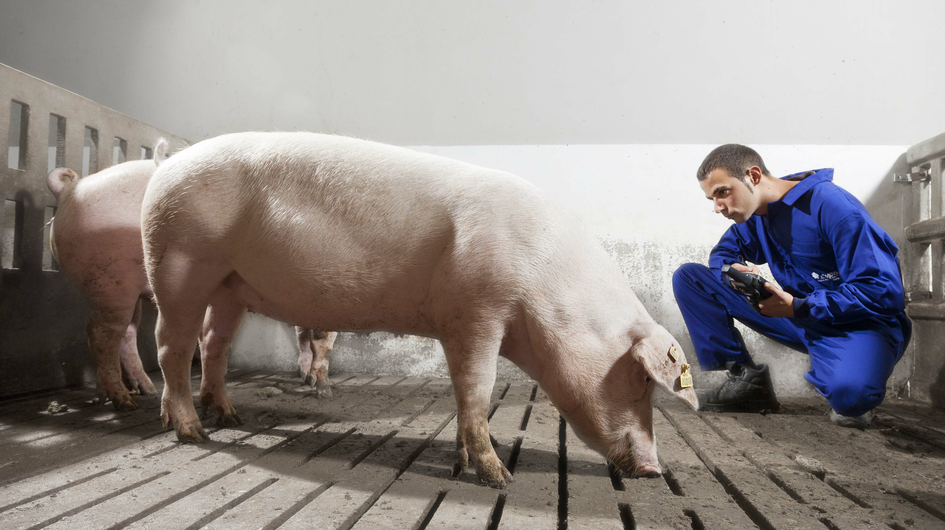
Hypor also continues to lead by example when it comes to sound welfare practices. As legislation changes in the animal industry and consumer expectations adjust, own facilities also conform to the ethically sound practices. Sometimes even adjusting to more sound welfare practices before legislation or the consumer demands the change. Hypor, and Hendrix Genetics as a whole, takes animal wellbeing incredibly seriously and they know that happy animals produce better results, so making these animals as comfortable as they can be is always the goal. Some examples of these improved welfare practices include cauterizing tails as they are being docked, to decrease infection and increase healing capabilities. Another example is using pain relievers when animals undergo tail docking and/or castration to minimize pain for the animal and help in a quicker recovery after the procedure. Hypor desires to be at the forefront of what well bred, easily manageable, and incredibly successful hogs look like, and we continue to be triumphant in these goals as the world continuously changes and demands better treatment of animals.
Conclusion
In conclusion, animal welfare has always been, and will always be, an incredibly important part of the animal industry. As we strive to improve productivity and minimize environmental impact, animal welfare will be a frontrunner in making that happen. When animal welfare is high, we can produce more with less animals, which helps to minimize environmental impact. Increased animal welfare also improves the workers' experience with them and positively impacts their life, increasing work morale and minimizing turnover and injuries. Hypor continues to be proactive when it comes to welfare standards, instead of being reactive. Animal welfare is the key to improving the animal industry as a whole and we will continue to adapt in our endless effort to make sure the animals, and the people working with them, have the best quality of life they can.
References
- WOAH. 2024. Animal welfare: a vital asset for a more sustainable world. Paris, 8 pp. https://doi.org/10.20506/woah.3440. L
- Mellor, David J. “Updating Animal Welfare Thinking: Moving beyond the "Five Freedoms" towards "A Life Worth Living".” Animals : an open access journal from MDPI vol. 6,3 21. 14 Mar. 2016, doi:10.3390/ani6030021
- WOAH (2024). The contribution of animal health and welfare to sustainable animal farming.
- Resolution adopted by the United Nations Environment Assembly on 2 March 2022.
- Mkwanazi, Mbusiseni Vusumuzi et al. “Effects of environmental enrichment on behaviour, physiology and performance of pigs - A review.” Asian-Australasian journal of animal sciences vol. 32,1 (2019): 1-13. doi:10.5713/ajas.17.0138
- Beattie VE, Walker N, Sneddon IA. Effects of environmental enrichment on behaviour and productivity of growing pigs. Anim Welf. 1995;4:207–20.
- Schaefer AL, Salomons MO, Tong AKW, Sather AP, Lepage P. The effect of environment enrichment on aggression in newly weaned pigs. Appl Anim Behav Sci. 1990;27:41–52.
- Pearce GP, Paterson AM. The effect of space restriction and provision of toys during rearing on the behaviour, productivity and physiology of male pigs. Appl Anim Behav Sci. 1993;36:11–28.
- Bolhuis JE, Schouten WGP, Schrama JW, Wiegant VM. Behavioural development of pigs with different coping characteristics in barren and substrate enriched housing conditions. Appl Anim Behav Sci. 2005;93:213–28.
- Blackshaw JK, Thomas FT, Lee J. The effect of a fixed or free toy on the growth rate and aggressive behaviour of weaned pig and the influence of hierarchy on the initial investigation of toys. Appl Anim Behav Sci. 1997;53:203–13.
- Guy JH, Rawlinson P, Chadwick JP, Ellis A. Behaviour of two genotypes of growing-finishing pigs in three different housing systems. Appl Anim Behav Sci. 2002;75:193–206.
- Grandin T. The Effect of Economic Factors on the Welfare of Livestock and Poultry. In: Grandin T., editor. Improving Animal Welfare: A Practical Approach. Cabi; Oxfordshire, UK: 2015.
- Douphrate D.L., Rosecrance J.C., Stallone L., Reynolds S.J., Gilkes D.P. Livestock handling injuries in agriculture: An analysis of workers compensation data. Am. J. Ind. Med. 2009;52:391–407. doi: 10.1002/ajim.20686.
- Sinclair, Michelle et al. “The Benefits of Improving Animal Welfare from the Perspective of Livestock Stakeholders across Asia.” Animals : an open access journal from MDPI vol. 9,4 123. 28 Mar. 2019, doi:10.3390/ani9040123


